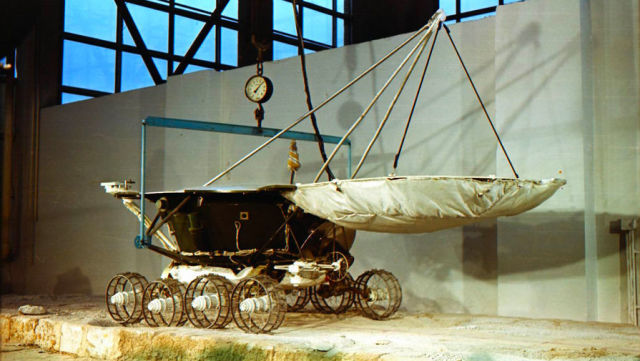Experts commented on declassified documents about the lunar Rover
To mark the 50th anniversary of the landing of the first Soviet lunar Rover, Roscosmos published previously unknown documents and drawings of the legendary mission. I have read some of the documents "Газета.Ru".
Exactly 50 years ago, the Soviet Union became the first country to successfully deliver a self - propelled vehicle to the moon - "Lunokhod-1", which together with its younger brother and the first satellite of the Earth forever became symbols of Soviet scientific thought and success in space exploration.
"...On November 17, 1970, at 6: 47 a.m., LUNA 17 made a soft landing on the moon's surface near the sea of Rain. The lunar vehicle LUNOKHOD-1 was installed on the landing stage, " the TASS report said. -
Today, only a Chinese Rover managed to do something like this.the success of the first Soviet lunar Rover launched in another technological era seems unthinkable - after all, it managed not only to survive on the moon, but also to significantly exceed the tasks assigned to it.
Lunokhod-1 consisted of two main parts: a wheeled chassis and a sealed instrument container that housed all service equipment.
The container had the shape of a truncated cone, and the upper base of the cone, which serves as a radiator-cooler for heat discharge, had a larger diameter than the lower one. During the moonlit night, the radiator was covered with a lid.
The instrument compartment was mounted on an eight-wheeled chassis that allows the automatic laboratory to move on the surface of the moon. It is known that when choosing the type, engineers abandoned the option of tracked and four-wheeled chassis because of their unreliability.
"We had to make more than one machine for testing on the ground. These tests were carried out on vibration stands and in pressure chambers in cold and warm conditions, we had to test the car for overloads, make sure that the overload capacity is sufficient for landing, although it is soft, " recalled chief designer Georgy Babakin. -
But certain overloads are created that the device must withstand, and it must exist normally after these overloads. Individual parts of the device were tested under ultraviolet radiation and proton fluxes in order to find out whether the quality of surfaces and their characteristics of sunlight reflection are preserved, which is extremely important for the operation of the thermal control system."
The crew - commander, driver, Navigator, operator and flight engineer-managed the self-propelled vehicle from the lunar Rover control Center. The crew of the lunar Rover, receiving lunar television images and telemetry information on Earth, used a specialized control panel to issue commands to the lunar Rover.
In the end of the survey the first part of the landing station "Luna-17" was built: topographic scheme of the route in the scale 1:1000 and specified schemes of individual sections in scale 1:200, elevation profiles of route and the characteristic craters. Using automatic spectrometric equipment RHYME was obtained information about the chemical composition of the lunar soil - in its composition it had the following elements: silicon (20%), iron (12%), calcium (8%), aluminum (7%), magnesium (7%), titanium (

